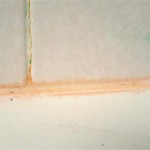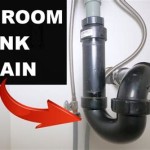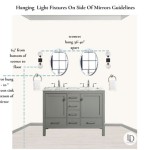Addressing a Slow Sink Drain in the Bathroom
A slow-draining sink in the bathroom is a common household plumbing issue. While often perceived as a minor annoyance, a persistently sluggish drain can lead to significant inconveniences, including unsanitary conditions and potential damage to the plumbing system. Understanding the causes and effective solutions for a slow bathroom sink drain is crucial for maintaining a functional and hygienic bathroom environment. This article will explore common culprits behind this problem and offer a comprehensive guide to diagnosing and resolving the issue.
Common Causes of Slow Bathroom Sink Drains
Several factors can contribute to a slow-draining bathroom sink. Identifying the root cause is the first step in effectively addressing the problem. The most common culprits include hair accumulation, soap scum buildup, mineral deposits, and foreign objects obstructing the drainpipe.
Hair Accumulation: Human hair is a primary contributor to drain clogs. Hair strands easily bind together, creating a dense mass that traps other debris and restricts water flow. The bathroom sink is a frequent location for hair accumulation due to shaving, grooming, and hair washing. This is particularly true in households with multiple occupants or individuals with longer hair. The texture of hair, especially when combined with soap and other residues, makes it particularly adept at forming stubborn clogs deep within the drainpipe.
Soap Scum Buildup: Soap scum is a byproduct of the chemical reaction between soap and hard water minerals like calcium and magnesium. This scum adheres to the interior walls of the drainpipe, gradually narrowing its diameter and impeding water flow. Over time, the buildup hardens, creating a resistant barrier. The type of soap used can also influence the formation of soap scum, with traditional bar soaps often producing more scum than liquid soaps or those formulated with water softeners. The warmer temperatures of the water typically used in bathroom sinks exacerbate the formation of soap scum.
Mineral Deposits: In areas with hard water, mineral deposits can accumulate within the drain system, further hindering water flow. These deposits, primarily calcium and magnesium carbonates, crystallize and adhere to the pipe walls, creating a rough surface that traps other debris and reduces the pipe's internal diameter. The accumulation is a gradual process, often unnoticed until the drain becomes significantly slow. Unlike soap scum, mineral deposits are often more difficult to dissolve and require more aggressive cleaning methods. The severity of mineral deposit buildup is directly correlated with the hardness of the water supply.
Foreign Objects: Small objects like toothpaste caps, cotton swabs, dental floss, and jewelry can accidentally fall into the drain and cause blockages. These objects can become lodged in the drainpipe, trapping other debris and creating a significant obstruction. The size and shape of the object influence the severity of the blockage. Irregularly shaped objects are more likely to snag on pipe imperfections and impede water flow. Preventing foreign objects from entering the drain is crucial in avoiding this type of clog.
Diagnosing the Location of the Clog
Pinpointing the location of the clog is essential for choosing the appropriate removal method. A clog can be located in the sink drain itself, the P-trap, or further down the drainpipe. Understanding the signs that indicate the clog's location will streamline the unclogging process.
Sink Drain Assessment: Begin by visually inspecting the sink drain itself. Remove the stopper and examine for any visible hair, debris, or foreign objects lodged near the surface. A small hook or tweezers can be used to extract easily accessible obstructions. If the water drains slightly faster after removing visible debris, the clog is likely located near the drain opening. However, if the drain remains slow, the obstruction is likely further down the drainpipe.
P-Trap Inspection: The P-trap is the curved section of pipe located beneath the sink. Its primary function is to trap debris and prevent sewer gases from entering the bathroom. The P-trap is a common location for clogs because it provides a natural collection point for hair, soap scum, and other debris. If the sink drain exhibits slow drainage, the P-trap should be inspected for obstructions. Evidence of clogged material visible in the trap indicates a specific area for cleaning.
Drainpipe Evaluation: If the sink drain remains slow despite cleaning the sink drain and the P-trap, the clog is likely located further down the drainpipe. This situation often requires more advanced methods like using a drain snake or chemical drain cleaner. In some cases, a professional plumber may be needed to address clogs located deep within the plumbing system. Sounds such as gurgling noises when draining the sink can indicate a blockage further down the drainpipe.
Checking Other Fixtures: If multiple fixtures in the bathroom, such as the sink and shower, are draining slowly, the problem could stem from a blockage in the main drain line. In this scenario, the problem extends beyond a simple localized clog and requires more comprehensive plumbing intervention.
Effective Methods for Clearing a Slow Sink Drain
Several methods can be employed to clear a slow sink drain, ranging from simple DIY techniques to more advanced plumbing tools. The choice of method depends on the severity and location of the clog, as well as the homeowner's comfort level with plumbing repairs.
Boiling Water: For mild clogs caused by grease or soap scum, pouring boiling water down the drain can be an effective solution. The hot water helps to melt away the grease and dissolve the soap scum, allowing the drain to flow freely. Exercise caution when using this method, as boiling water can damage certain types of pipes, particularly PVC pipes. It's generally safe to use boiling water for metal pipes. Multiple applications of boiling water may be required to fully clear the clog.
Baking Soda and Vinegar: A mixture of baking soda and vinegar creates a chemical reaction that can help to break down organic matter and loosen clogs. Pour one cup of baking soda down the drain, followed by one cup of vinegar. Allow the mixture to fizz for 30 minutes, then flush with hot water. The fizzing action helps to dislodge debris and break down the clog. This method is considered a more environmentally friendly alternative to chemical drain cleaners.
Plunger: A standard cup plunger can often dislodge clogs located near the drain opening or in the P-trap. Ensure that there is enough water in the sink to cover the cup of the plunger. Create a tight seal around the drain opening and plunge vigorously for several minutes. The pressure created by the plunger can help to break up and dislodge the clog. It may be necessary to repeat the process several times to fully clear the drain.
Drain Snake: A drain snake, also known as an auger, is a flexible tool used to physically break up and remove clogs from drainpipes. Insert the drain snake into the drain opening and feed it down the pipe until it encounters the clog. Rotate the snake to break up the clog and then pull it back out, removing the debris. Drain snakes are available in various lengths and thicknesses, depending on the size of the drainpipe and the severity of the clog. This is a more aggressive method, but often successful on tough blockages.
Chemical Drain Cleaners: Chemical drain cleaners are available for purchase at most hardware stores and supermarkets. These cleaners contain harsh chemicals that dissolve organic matter and break down clogs. While effective, chemical drain cleaners can be corrosive and harmful to the environment. They can also damage certain types of pipes. Always follow the manufacturer's instructions carefully when using chemical drain cleaners. It is generally recommended to use safer alternatives whenever possible. If using chemical drain cleaners, proper ventilation and protective gear are necessary.
Cleaning the P-Trap: As previously mentioned, the P-trap is a common location for clogs. To clean the P-trap, place a bucket beneath the trap to catch any water or debris. Loosen the slip nuts that connect the P-trap to the drainpipe and carefully remove the trap. Clean out any accumulated debris and rinse the trap with water. Reassemble the P-trap, ensuring that the slip nuts are tightened securely. Run water through the drain to check for leaks.
Professional Plumbing Services: In cases where DIY methods are unsuccessful, or if the clog is located deep within the plumbing system, contacting a professional plumber is recommended. Plumbers have specialized tools and expertise to diagnose and resolve complex drain issues safely and effectively. They can also identify and address underlying plumbing problems that may be contributing to the slow drain.
Preventing future clogs is crucial for maintaining a smoothly functioning bathroom sink. Implementing proactive measures can significantly reduce the frequency of slow drain issues. Regular maintenance and careful preventative practices are beneficial in minimizing future plumbing problems.

Slow Sink Drain 6 Diy Fixes For Before You Call A Plumber Bob Vila

How You Can Fix A Slow Draining Drain On Your Own Call Ashton Plumbing

4 Tips To Fix A Slow Draining Sink

Slow Sink Drain 6 Diy Fixes For Before You Call A Plumber Bob Vila

How Can I Clear A Slow Drain Faq Plumbing By Jake

How To Unclog A Slow Running Bathroom Sink Drain 10 Options
.1).jpg?strip=all)
Helpful Ways To Fix A Slow Sink Drain

How To Unclog A Slow Running Bathroom Sink Drain 10 Options

Why Are The Sinks Draining Slow In My Napolis Home

What Is The Best Way To Fix A Slow Sink Drain Como Desentupir Pia Do Banheiro
Related Posts







